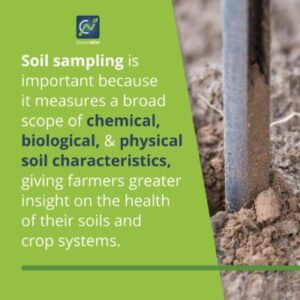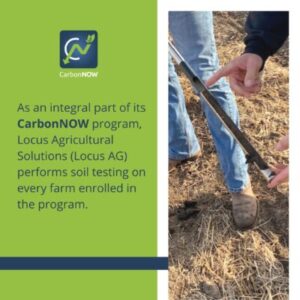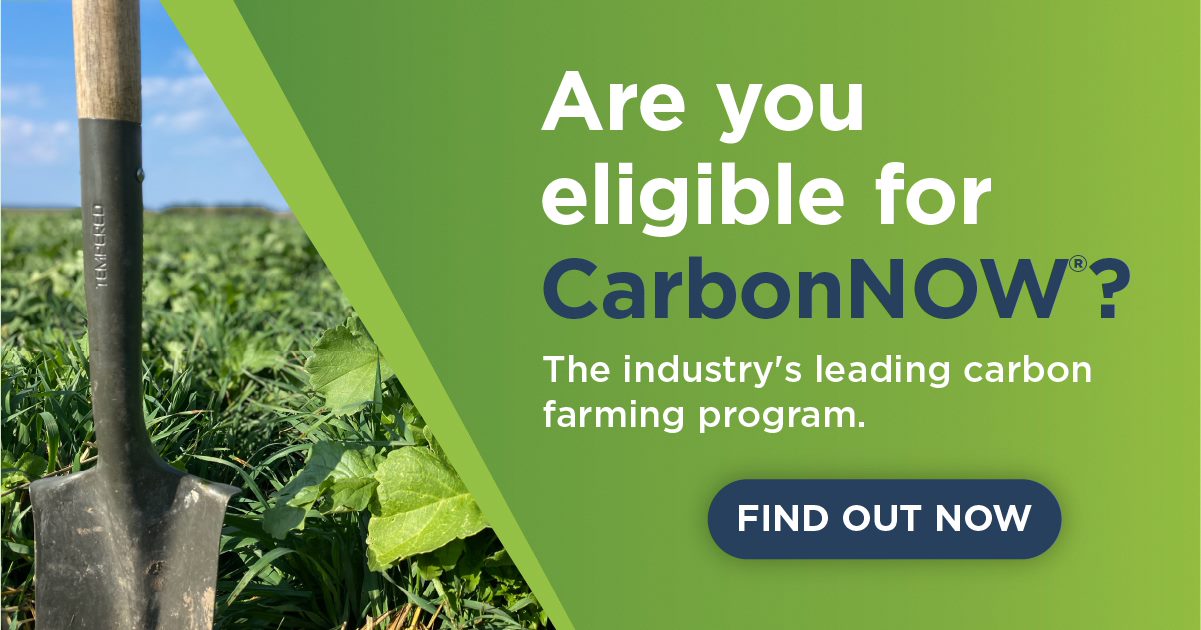
Soil Sampling: Understanding Its Importance & Methods
Make Better Farm Management Decisions With The Results Of Regular Soil Sampling
To get a complete picture of how an agroecosystem is doing, you have to look at what’s happening in the ground. One way to do so is with soil testing, which measures a wide range of soil characteristics and data points, including pH, organic matter, and microbial activity. The process and specific metrics vary depending on which type of soil test is used. When done right, soil sampling can provide a representative snapshot of fertility across an agricultural field–providing growers with critical information to make their best management decisions.
This article covers:
- Why is soil sampling important?
- Measuring Carbon in Soil – Bulk Density & Soil Organic Content (SOC)
- How soil sampling informs CarbonNOW, Locus AG’s carbon farming program
Why is soil sampling important?

Soil sampling is important because it measures a broad scope of chemical, biological, and physical soil characteristics, giving farmers greater insight on the health of their soils and crop systems. One of the most critical elements that testing can reveal is the amount of soil microbial activity.
Also known as “microscopic organisms,” soil microbes perform several complex functions that are essential to crop productivity including:
- Breaking down crop residues
- Cycling nutrients through the soil
- Enhancing water and nutrient uptake
- Stimulating plant growth
Not all microbes are created equal. Fertile soils require a balanced presence of beneficial microbes and an absence or low presence of harmful microbes.
LEARN MORE: Soil Microbiology 101
The question of when, where, how deep, and how often you should sample your soil remains a running debate among soil scientists.
There are also several types of soil tests used to analyze the many soil components and properties that may impact crop development.
Measuring Carbon in Soil – Bulk Density & Soil Organic Content (SOC)

As a living system, soil depends on the presence of carbon for a wide variety of chemical, physical, and biological functions.
Carbon measurements are derived from a combination of bulk density and SOC analysis.
- Bulk density tells you the amount of pore space and storage capacity of the soil sample. It is an indicator of soil compaction, and is calculated by taking the dry weight of soil divided by its volume.
- Soil organic content (SOC) is derived from soil organic matter and plays an integral role in the formation of energy that is usable to plants.
The presence of SOC provides a wide host of benefits, including improved nutrient and water-use efficiency, better soil structure, and reduced erosion.
Well-balanced SOC pools result in:
- Soil structure for greater physical stability
- Improved soil aeration
- Higher water drainage and retention
- Greater nutrient absorption
- Increased biological productivity of a field
- Increased yield / net productivity
Changes in SOC generally occur over the span of several years. It is often difficult to track and identify small changes, but a strong soil sampling strategy can help to capture the variation in soil carbon over time.
Rather than taking physical soil samples, many carbon farming programs rely on soil modeling, which calculates soil composition averages for an entire geographic region or zone.
How soil sampling informs CarbonNOW, Locus AG’s carbon farming program
 As an integral part of its CarbonNOW program, Locus Agriculture (Locus AG) performs soil testing on every farm enrolled in the program. Results from the soil tests determine a treatment plan that will supply the greatest benefit specific to crop type.
As an integral part of its CarbonNOW program, Locus Agriculture (Locus AG) performs soil testing on every farm enrolled in the program. Results from the soil tests determine a treatment plan that will supply the greatest benefit specific to crop type.
CarbonNOW uses two types of soil tests to get a broader perspective on what’s happening below the ground. In addition to a SOC test, the program includes a Bulk Density (BD) test to measure soil compaction, pore space and storage capacity.
Learn More: Locus AG’s carbon farming program, CarbonNOW
The results from soil sampling will likely affect management decisions such as cover crop selection, crop rotation, tillage plans, and the use of organic amendments. Soil tests also provide data on quantified sequestered carbon, which serves as the basis for carbon farming programs eligibility.
Farmers know that soil composition and fertility can vary substantially across the fields of an individual farm. Physical soil samples provide the most comprehensive and accurate data for site specific soil evaluations.
Locus AG’s CarbonNOW program manages both soil sampling and data collection for every enrolled farmer.
Learn more about how soil sampling can inform your crop treatment plan and help you earn carbon credits for increased profits today.
Want to learn how Locus AG vital biologicals can increase your yields and profits?
Fill out the form below and one of our agricultural experts will be in touch.



